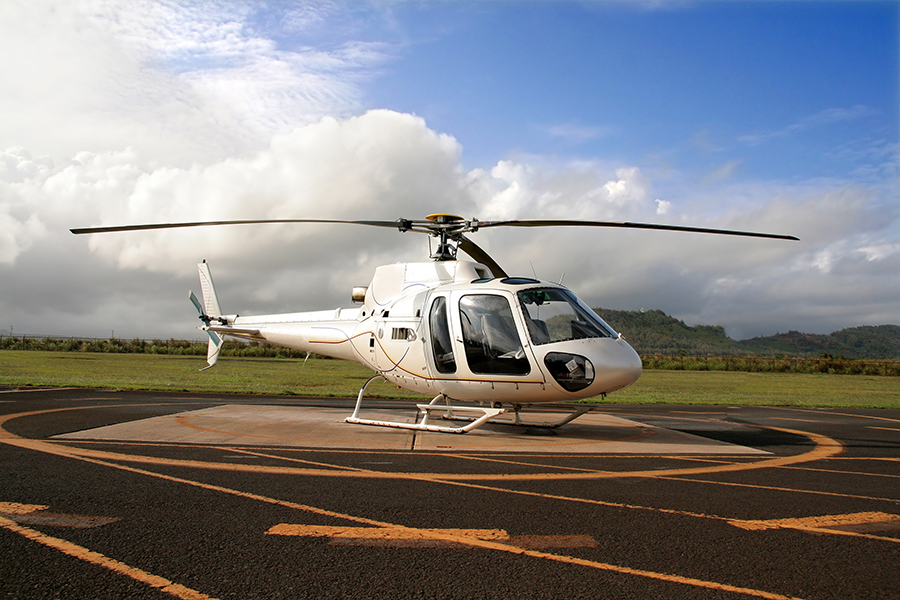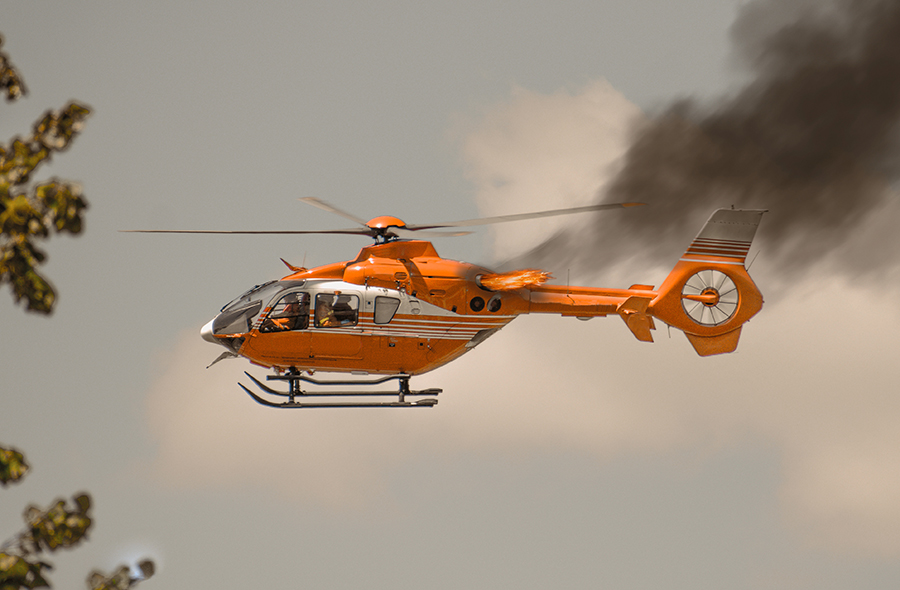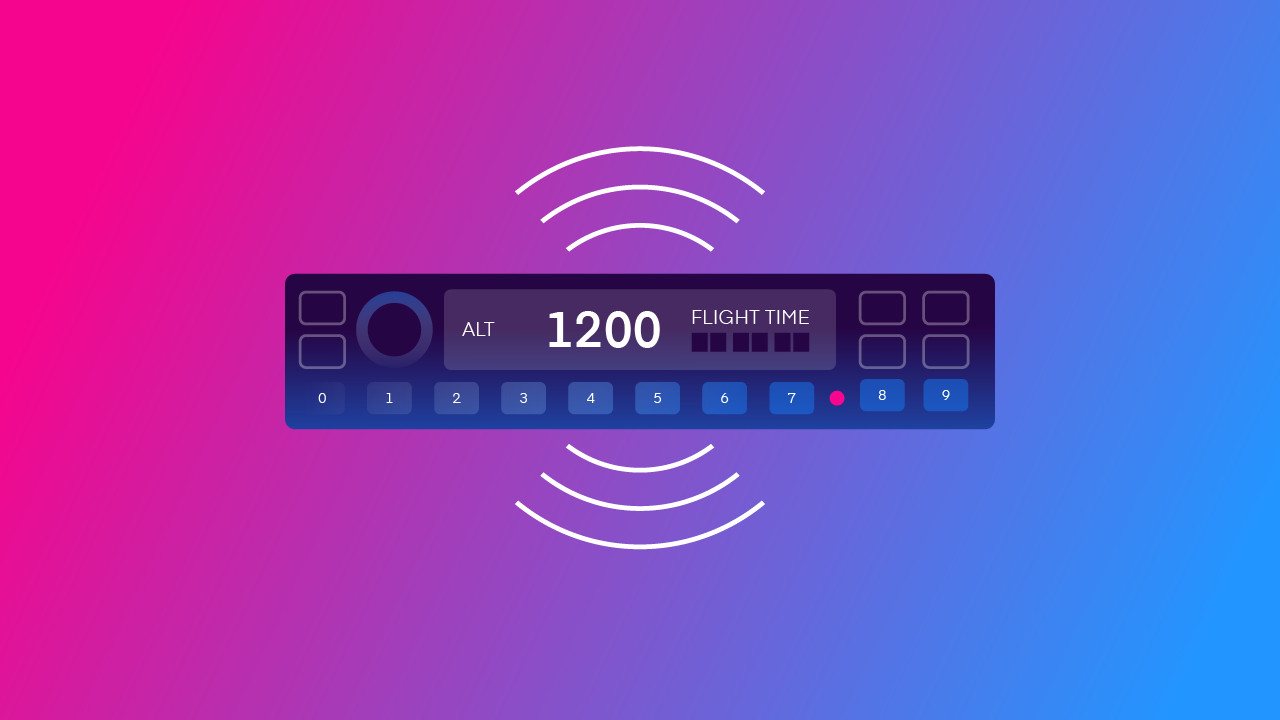-
Myth No 1 – helicopters are really difficult to fly and most people can't manage to learn to do it
-
Myth No 2 – helicopters are incredibly expensive
-
Myth No 3 - small helicopters are fragile and can’t cope with strong winds, which can even be dangerous for them
-
Myth No 4 – helicopters are dangerous, and you only have to look at the accident records to prove it.
-
Conclusion and 'Myth' No 5
Most people know very little about helicopters, and even less about flying them and what they involve. During many years during which I’ve worked as a commercial helicopter pilot and instructor, I’ve heard a lot of untrue and downright strange things said about helicopters. Here are some common examples…
- “Oh no, you wouldn’t ever catch me flying a helicopter! For a start, I’d never manage it; aren’t they really, really difficult to fly? I just don’t have that sort of co-ordination”
- “Helicopter flying is incredibly expensive, isn’t it? There’s no way anyone could afford it, without being close to being a millionaire, if not a billionaire.”
- Small helicopters aren’t any good in strong winds; they’re too fragile. More than a tiny puff of wind, and they’re uncontrollable and even likely to break up!”
- “Let’s face it; Helicopters are really dangerous; you only have to look at the accident rates to realize that. They’re far higher than for other types of aircraft. Helicopters are much more dangerous than airplanes or gliders or any other type of flying machine.”
Now, I’ve never actually heard quite so many mistaken assumptions about helicopters stated in so few words by one person at any given time. But I easily could have done it. The above statements are fairly typical of some of the erroneous and even weird ideas people have about helicopters. This applies even to some fixed-wing pilots, who I always think ought to know better, even if they don’t do any rotary flying. But it seems to be the case that these myths concerning helicopters are repeated so often that people come to believe that they must be true – the ‘no smoke without fire’ syndrome, perhaps. And so the myths get passed around and are finally accepted as facts.
So are these statements described above about helicopter flying true? No, they are, not at all! And I can prove it to you. So let’s take a look at each of these ideas in turn.
Myth No 1 – helicopters are really difficult to fly and most people can’t manage to learn to do it
No, actually, helicopters are not that hard to fly. Most ordinary people can learn to fly a helicopter. If you can drive a car, ride a bike, or do anything else requiring a fair degree of coordination, then you could probably learn to fly a rotary aircraft. Students working towards the Helicopter Private Pilot’s License take about the same amount of time to complete the course as their fixed-wing counterparts, the national average is around 60-70 hours. Indeed, as with fixed-wing flying, a few real ‘naturals’ do manage to qualify in the legal minimum number of hours, though this is rare in any aircraft type.
It is true that some helicopter maneuvers are quite difficult. Hovering takes many students quite a long while to master, and since it is so central to helicopter flying, this often means that students cannot move on to the next lesson until they have managed it. But the same type of thing applies to many people during fixed-wing training when it comes to some specific maneuvers. This is especially the case when it comes to learning to land, which can take some students a very long time, particularly when it comes to crosswind landings. Indeed, I cannot think of any helicopter maneuver that is as hard as fixed-wing crosswind landings. And unlike in a fixed-wing aircraft, the approach and landing in a helicopter are comparatively easy, because there is no requirement to keep up your speed to prevent a stall. In company with many others who fly both types of aircraft, I’ve always preferred being able to slow down before I land, rather than the other way round.
Navigation is admittedly more difficult in a small helicopter such as the R22 than it is in a small fixed-wing aircraft since you need to keep your hands on the controls all the time; you can’t trim the aircraft and then concentrate on studying your map. But you can learn not to need to do that. In fact, this whole navigation issue comes down to cockpit management rather than anything else, and helicopter pilots get used to doing many things in advance, such as folding the map suitably and writing down all the relevant information they need. And the ability of a helicopter to slow down without stalling means that you can always reduce the speed to give yourself time to think when you are navigating. This gives you more time to work out where you are, or to decide exactly what you need to do. This is particularly useful when approaching an unfamiliar airfield, for example. In an airplane, you absolutely have to keep up your speed. But in a helicopter, you can approach it slowly, make sure you have time to study the runway layout, and then work out the best way to land. You can even come to a high hover if you need to, although this is not generally recommended for a number of reasons.
So overall it’s swings and roundabouts really, with respect to the relative difficulties of each type of flying machine. Some of us helicopter pilots would like everyone to think it’s really difficult so that they can believe that we’re extra special supermen and superwomen, quite unlike the rest of the human race. So, being human, we’re sometimes quite keen to perpetuate the myth that helicopter flying is really hard. But it’s not really the case.
Myth No 2 – helicopters are incredibly expensive
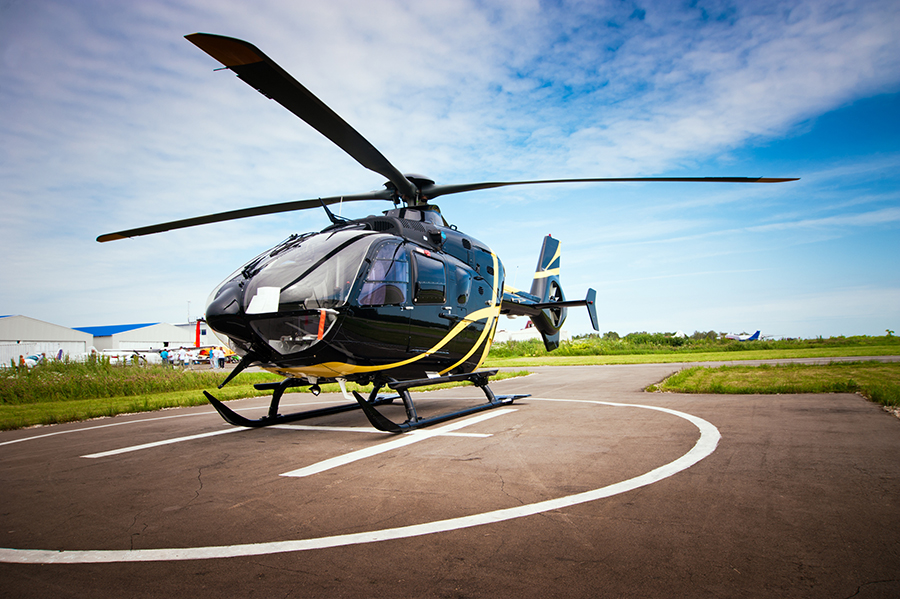
It is indeed true that the training costs for gaining a helicopter private pilots license are about double that of fixed-wing flying, although this does vary at different flying schools and even in different parts of the world. And the same applies to self-fly hire charges once you’ve got your Private Helicopter License. Also, buying a helicopter is far more expensive than buying airplanes, especially at the cheaper end of the scale.
However, the basic costs of training and each type of aircraft are not quite the whole stories. In a helicopter, a lot less time is wasted when you are flying. By that, I mean that you can generally start up your helicopter, take off into the wind, and go to your destination and land, without spending expensive time in a queue for the departure runway or sometimes following some complicated procedure at your destination airfield. I remember an incident many years ago, when I was trying to leave a fly-in at about the same time as around a dozen other aircraft, all of them fixed-wing types. I’ll never forget the envious glances from the other pilots as I called upon the radio and asked to depart immediately and directly into the wind, effectively jumping about ten minutes of queuing time…and also money-burning time.
In addition, if you have a specific destination that is off-airfield, a helicopter can act as precise door-to-door transport, since it doesn’t need a runway on which to take off and land. You can just take off and land exactly where you want to be, in many instances. This can save on taxi fares, which can add up to quite a bit if you are touring by aircraft. And of course, it is far more convenient to be able to simply fly to exactly where you want to be.
If you don’t want to go anywhere, but just want to get airborne and play and have fun, rather than go anywhere for a specific reason, there’s so much more you can do in a helicopter. A flight doesn’t have to be to another airfield, of which the nearest one could be maybe an hour away. Instead, you can visit friends and land on their property, even in their gardens. Or you can simply hover and have fun at a low level. This means that the feeling of boredom and sameness about local flying that can often set in after someone has had a fixed-wing Private Pilots’ License for a year or so, necessitating longer and longer and more and more expensive flights, doesn’t tend to happen with a helicopter license, because there is such a variety of things that you can try. So yes, it is more expensive to fly helicopters, if you simply consider the basic figures involved. But once everything is taken into account, the difference is not anything as great as it appears at first appears.
Myth No 3 – small helicopters are fragile and can’t cope with strong winds, which can even be dangerous for them
It is true that small helicopters do vibrate quite a lot anyway in any weather conditions. But they cope with all weather conditions at least as well, and often better, than fixed-wing aircraft of equivalent size. After all, wind strength as such is rarely a problem in any aircraft, unless it gets to a point where the machine is about to be blown apart. And you would need some pretty extreme wind speeds for this to be the case, and you’re not likely to be airborne in these conditions in the first place! It is more usually the case that it is either uncomfortable for the passengers, or difficult for the pilot to fly and keep the aircraft under control. And when it comes to passenger comfort, small helicopters actually ride the wind surprisingly well. Students coming for introductory lessons often tell me how surprised they are at how stable a helicopter can feel in a fairly strong wind. The type of turbulence that affects the wings of an airplane and leads to the feeling of being flung around the sky may affect the helicopter rotors in a similar fashion, but this is usually not transmitted to the fuselage below, which simply stays steady. So the ride feels fairly smooth for the passengers, even in quite a strong wind.
When it comes to pilot handling, helicopters are in many respects easier to manage in windy conditions than airplanes. In upper air work, there is simply no difficulty. And as I already mentioned, there is really no equivalent to the fixed-wing crosswind landing, in terms of difficulty for the pilot. In a helicopter, you can simply land into the wind, or if absolutely compelled to use a runway that is out of the wind, you can turn into wind at the last moment as you come to a hover. It is true that hovering in a strong wind may be quite challenging, but again, you can turn into wind and hover-taxi sideways if conditions warrant it, or just land if it all becomes a bit much. Overall, small helicopters cope very well with strong winds. They just look as though they can’t!
Myth No 4 – helicopters are dangerous, and you only have to look at the accident records to prove it.
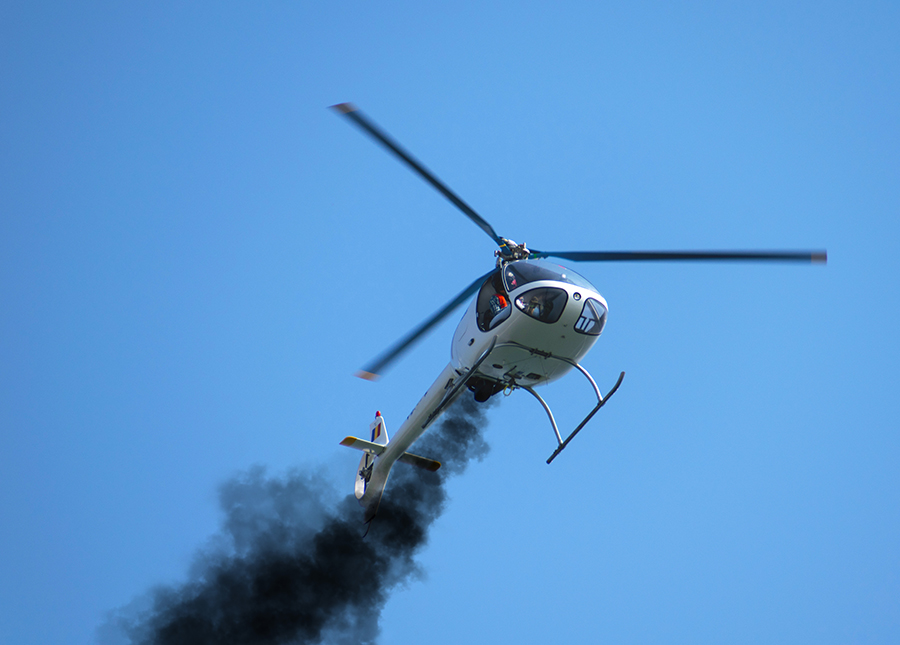
Actually, if you do take a look at the accident reports you will find that very few helicopter accidents are caused by engine failure, other mechanical failures, or anything else to do with the actual machine. The primary reasons for accidents are more or less the same as for fixed-wing aircraft. Controlled flight into terrain generally tops the list, as do other factors associated with flying in bad weather. Wire strikes figure quite frequently, since so many helicopter landings are off-airfield, and wires are a common hazard. Most other causes also seem to be associated with a human error rather than anything else. And when aircraft failures do happen, they are, again, similar to those in airplanes. For example, carburetor icing is the most common cause of engine failure in a small helicopter, as it is in fixed-wing aircraft.
Other emergencies such as engine fires, electrical fires, unexplained vibrations, and so on, are very rare in helicopter flying. And when they do happen, the helicopter pilot has one big advantage over his or her fixed-wing colleague; he or she can simply make a precautionary landing on any flat area that is available, and it doesn’t need to be very large. The fixed-wing pilot would probably have to divert to the nearest airfield, or at least look for a very large, flat field…which he’d probably have great difficulty in departing from again, should the aircraft turn out to be flyable after all. But the helicopter pilot can land almost anywhere if he has to, even on a flat roof in a city if there is a real emergency that requires you to get on the ground as soon as possible.
Conclusion and ‘Myth’ No 5
So I hope I’ve now proved to you that in most respects helicopters are not as they are often portrayed. To summarise, flying them is relatively easy, not all that outrageously expensive, fairly comfortable, and as safe as flying any other type of aircraft. In fact, in almost all ways, piloting a helicopter is probably within the reach of most people, if they want to give it a go.
However, before you go out and book a rotary introductory lesson or discovery flying, I should perhaps offer one word of warning. There is a fifth helicopter ‘myth’, or what is sometimes thought to be a myth. This is the idea that rotary flying is hopelessly addictive, and that having a go just once is never enough; you will find that you just have to continue.
But in this case, the so-called ‘myth’ concerning helicopter flying is true in my experience. It is the case that once you’ve tried flying a helicopter, and particularly when you’ve mastered hovering, even if only for a few seconds, you probably won’t be able to stop. You will want to do more, and more, and more. And you will probably carry on until you get your Helicopter Private Pilots’ License, and maybe go even further. It has happened to many of us. We didn’t set out to be helicopter pilots; we just planned to try it, and somehow, we just kept going back for more, and more, and more.
When I decided to try flying helicopters, I had a fixed-wing Private Pilots’ License, and I simply went for an introductory helicopter lesson, just to see what it was like. I even told my friends that I wouldn’t take it up no matter how much I liked it, as I simply couldn’t afford it. But I tried hovering, and I managed to hover with all three controls for a total of 39 seconds – my instructor was counting. And at that point, I decided I just had to do more. I said I’d just do a few more lessons, then stop. But of course, I didn’t. And sometime later I had a Commercial Helicopter License and Instructor’s Rating, and no intention of ever giving up flying these wonderful little machines.
So maybe take note and learn from my experience. It could happen to you. And if it does, don’t say I didn’t warn you!
